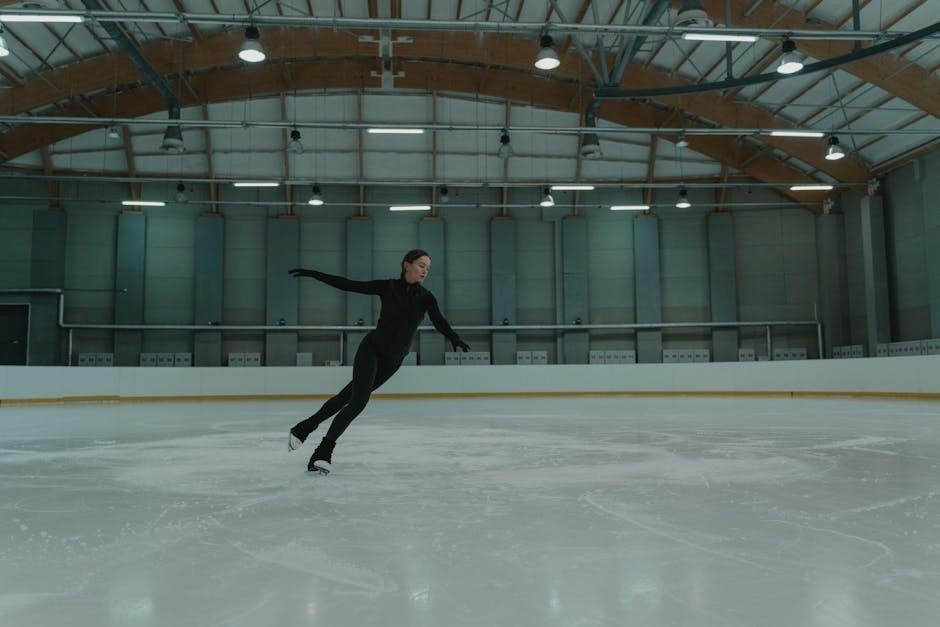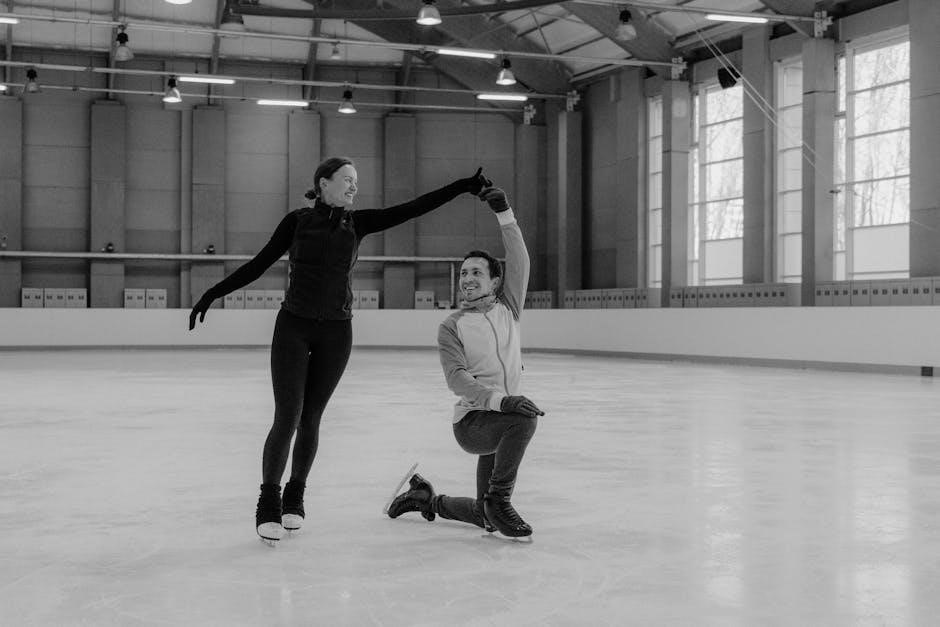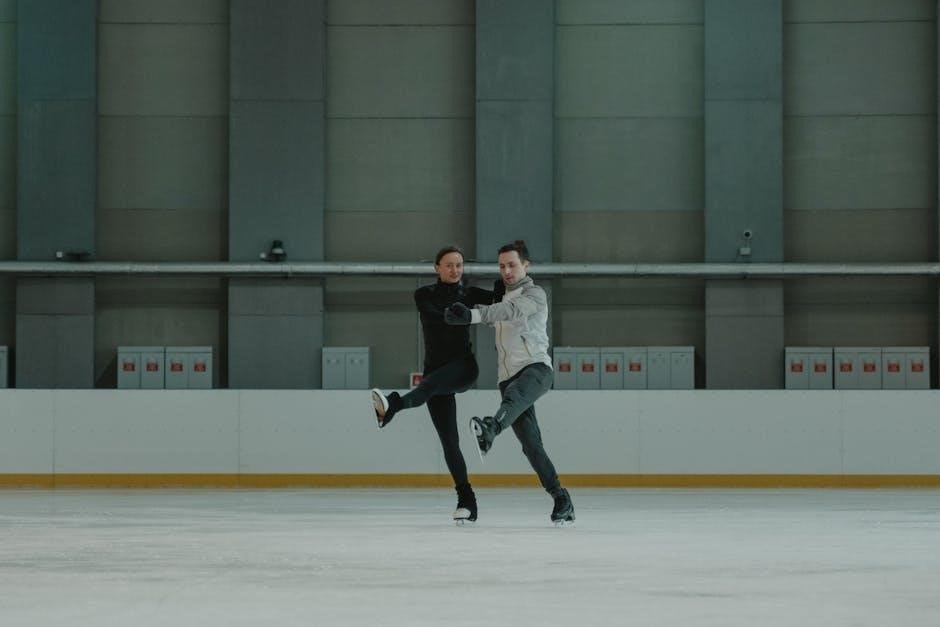Cawthorne-Cooksey exercises are a structured program developed by Dr. Cawthorne and Dr. Cooksey to improve balance and reduce dizziness through specific eye, head, and body movements. They aid in vestibular rehabilitation by gradually training the brain to adapt to inner ear imbalances.
1.1 What Are Cawthorne-Cooksey Exercises?
Cawthorne-Cooksey exercises are a series of specific movements designed to improve balance and reduce dizziness. Developed by Dr. Cawthorne and Dr. Cooksey, they focus on eye movements, head exercises, and body movements to enhance vestibular rehabilitation. These exercises are typically performed in four stages: in bed, sitting, standing, and moving about. They aim to gradually train the brain to adapt to inner ear imbalances, improving overall balance and reducing symptoms of vertigo or dizziness.
1.2 Purpose and Benefits of the Exercises
The purpose of Cawthorne-Cooksey exercises is to help the brain adapt to inner ear imbalances, improving balance and reducing dizziness. These exercises enhance vestibular rehabilitation by gradually increasing tolerance to abnormal balance signals. Benefits include improved coordination, reduced vertigo symptoms, and enhanced overall stability. Regular practice helps the body compensate for vestibular issues, leading to better daily functioning and quality of life. They are a non-invasive, effective way to manage balance disorders and can be performed at home as part of a structured routine.

Detailed Overview of the Exercises
Cawthorne-Cooksey exercises involve eye, head, and body movements designed to improve balance and reduce dizziness by enhancing vestibular function and promoting neural adaptation.
2.1 Eye Movements (Head Kept Still)
Eye movements involve looking up and down, side to side, and focusing on a moving object. Start slowly, gradually increasing speed. These exercises improve balance and reduce dizziness by enhancing visual stability and vestibular coordination. Perform eye movements three times daily to strengthen neural connections and adapt to inner ear imbalances. This step is foundational for progressing to more complex movements and is typically done with the head kept still to isolate eye function.
2.2 Head Movements (Eyes Open and Closed)
Head movements involve bending forward, backward, and turning side to side, performed with eyes open and closed. Start slowly, increasing speed over time. These exercises enhance balance, reduce dizziness, and strengthen vestibular function. Perform them three times daily, gradually progressing to faster movements. Begin with eyes open for stability, then practice with eyes closed to challenge balance further. This step helps improve coordination between the inner ear, eyes, and brain, reducing symptoms of imbalance and promoting overall stability.
2.3 Body and Arm Movements
Body and arm movements are essential for improving coordination and balance. These exercises include shrugging shoulders, circling arms, and rotating the trunk. Perform them while sitting or standing, starting slowly and increasing speed as comfort allows. Arm movements help reduce dizziness by enhancing posture and stability. Practice these exercises three times daily to strengthen core muscles and improve overall balance. Gradual progression ensures the brain adapts to new challenges, reducing vestibular symptoms and enhancing daily functioning.

Progression of Exercises
The exercises progress from simple to complex movements, starting in bed, then sitting, standing, and finally moving about, adapting to symptom severity and improving balance gradually.
3.1 Week 1: Exercises in Bed
During the first week, exercises are performed while lying in bed to minimize the risk of falls and allow the body to adapt slowly. Eye movements, such as looking up and down or side to side, are done first. Gentle head movements, like bending forward and turning from side to side, follow. These exercises are performed slowly at first, gradually increasing in speed as tolerance improves. The focus is on reducing dizziness and enhancing balance control in a safe environment.
3.2 Week 2: Sitting Exercises
In the second week, exercises progress to a sitting position, building on the foundational movements started in bed. Eye movements, such as focusing on a moving finger and shifting gaze side to side, continue. Head movements, including bending forward and turning from side to side, are now performed more vigorously. Gentle shoulder and arm movements are also introduced to enhance coordination and balance. These exercises are done slowly at first, then increased in speed as tolerance allows, focusing on improving stability and reducing dizziness.
3.3 Week 3: Standing Exercises
During Week 3, exercises progress to standing, focusing on improving balance and stability while upright. Eye and head movements become more dynamic, with increased emphasis on coordination. Standing exercises include shifting weight, gentle turns, and reaching for objects while maintaining focus. These activities help strengthen balance mechanisms and reduce dizziness. Movements are performed slowly at first, then gradually increased in speed and complexity. Standing exercises simulate daily activities, preparing the individual for more advanced movements in the final week.
3.4 Week 4: Moving About
Week 4 involves moving about in an open area, focusing on dynamic balance and coordination. Exercises include walking, changing direction, and performing movements while focusing on objects. These activities simulate real-life scenarios, helping to restore balance in everyday situations. Movements are more complex, emphasizing fluid transitions and adaptability. Consistency in performing these exercises is crucial for long-term improvement in balance and reducing dizziness during daily activities.

Safety Tips and Precautions
Ensure a safe environment to reduce injury risk. Perform exercises in a clear, open space and use support when needed. Start slowly and avoid rushing movements.
4;1 Importance of a Safe Environment
Creating a safe environment is crucial when performing Cawthorne-Cooksey exercises to minimize the risk of falls and injuries. Ensure the space is clear of obstacles and tripping hazards. Use a sturdy chair or wall for support, especially during standing exercises. Proper lighting is essential to maintain visibility and balance. Avoid performing exercises near stairs or uneven surfaces. A secure setting allows you to focus on your movements without distractions or risks.
4.2 Performing Exercises Slowly and Gradually
Performing Cawthorne-Cooksey exercises slowly and gradually is essential to avoid worsening dizziness or discomfort. Start with gentle movements and progress as tolerance improves. Eye exercises should begin with slow, controlled motions, gradually increasing speed. Similarly, head and body movements should be executed carefully to prevent overwhelming the vestibular system. This gradual approach helps the brain adapt and improves balance over time. Consistency and patience are key to achieving long-term benefits and reducing symptoms effectively.

Cawthorne-Cooksey Exercises PDF Guide
The Cawthorne-Cooksey exercises PDF provides a comprehensive guide for patients, offering detailed instructions and visual aids for each exercise. It ensures a structured approach to vestibular rehabilitation.
The PDF is designed to be user-friendly, allowing individuals to follow the exercises safely and effectively at home, with clear progression guidelines and expert recommendations.
5.1 What the PDF Includes
The Cawthorne-Cooksey exercises PDF includes detailed instructions, visual aids, and a structured plan for vestibular rehabilitation. It covers eye, head, body, and arm movements, with progression guidelines.
The guide provides safety tips, exercise schedules, and symptom grading tools. It also offers information on managing dizziness and improving balance, making it a comprehensive resource for patients.
5.2 How to Use the PDF for Exercise Routine
The PDF guide provides a clear, step-by-step approach to performing Cawthorne-Cooksey exercises. Start with basic eye movements, gradually incorporating head and body exercises. Follow the weekly progression, beginning in bed, then sitting, standing, and moving about. Perform exercises three times daily, starting slowly and increasing intensity as tolerance improves. Use the symptom grading scale to track progress and adjust as needed. Ensure a safe environment and adhere to the instructions for optimal results.
Cawthorne-Cooksey exercises are effective for improving balance and reducing dizziness. The Cawthorne-Cooksey exercises PDF provides detailed instructions and progress tracking. Visit balanceanddizziness.org for additional resources and support.
6.1 Summary of the Exercise Program
The Cawthorne-Cooksey exercises are a progressive program designed to improve balance and reduce dizziness. They include eye, head, and body movements, starting in bed and advancing to standing. The exercises are performed three times daily, gradually increasing in intensity. The program aims to enhance the brain’s ability to adapt to imbalance, with detailed instructions provided in the Cawthorne-Cooksey exercises PDF. Regular practice helps restore equilibrium and reduce vertigo symptoms effectively.
6.2 Where to Find More Information
For comprehensive details on the Cawthorne-Cooksey exercises, consult the official Cawthorne-Cooksey exercises PDF, available on reputable health websites like balanceanddizziness.org. Additionally, medical institutions and vestibular rehabilitation specialists provide guided resources. You can also find instructional leaflets and video tutorials online to supplement your practice. Always ensure the source is credible to receive accurate and safe exercise instructions.